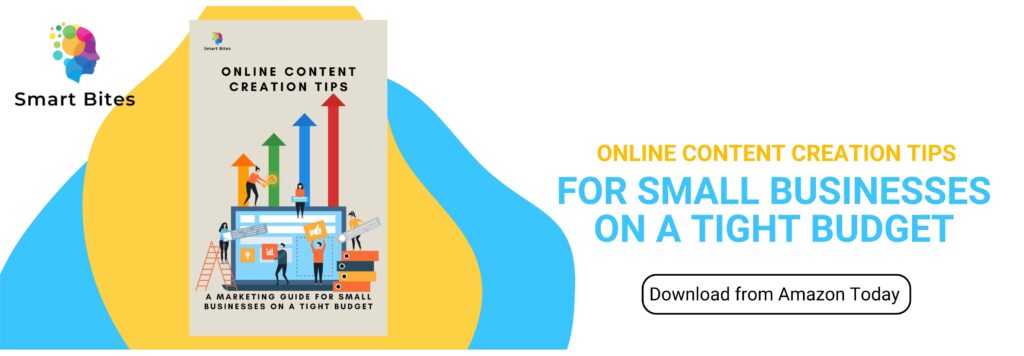
What is User-Generated Content?

User-generated content (UGC) refers to any content, such as text, images, videos or audio recordings, that is created and shared by users of a product or service.
UGC can take various forms, such as social media posts, blogs, online reviews and discussion forum threads. A simple example would be if someone eating in a MacDonald’s decided to take a video or photo of themselves and then posted it on their social media timeline.
Unlike content generated by a company or brand, UGC is created by individuals who are not necessarily affiliated with the company or compensated for their contributions. They are essentially free spirits.
The point is that UGC is generally seen as an authentic and trustworthy source of information since it comes from real people who have used or experienced a particular product or service. Testimonials are another common form of UGC that can have a profound effect on the visibility of a company. Think of it as word-of-mouth advertising with a little creativity thrown in.
UGC can be used for a range of purposes, including marketing, brand promotion, customer engagement and research. Your business can also use it to build relationships with customers, increase brand awareness and potentially drive sales.

UGC Statistics
- 90% of consumers consider authenticity as a crucial factor when deciding which brands to support and like, an increase from 86% in 2017.
- Consumers consider UGC 9.8 times more impactful than influencer content when making a purchasing decision.
- 92% of consumers rely on referrals from people they know above any other source.
- 84% of consumers trust peer recommendations over any other form of advertising.
- 79% of people indicate that user-generated content (UGC) significantly influences their purchasing decisions.
- Millennials, specifically those aged 25 and above, generate over 70% of all UGC, making them the primary drivers of content.
What are the Benefits of User-Generated Content?
UGC offers several potential benefits for small businesses, including:
- It provides an authentic and trustworthy representation of the customer’s experiences, opinions and feelings about a product or service. This authenticity can help small businesses build trust and credibility with their potential customers in a more organic way.
- UGC is an affordable and effective way for small businesses to generate content and engage with their customers. Since the content is created by users, you don’t have to invest a lot of time or resources into your marketing in this area.
- It should help small businesses increase customer engagement and brand awareness and can be even more important as they start to grow.
- UGC can improve search engine optimization (SEO) and boost visibility online. Since UGC tends to be highly relevant and keyword-rich. It’s also shareable content that can quickly have an impact online.
- UGC should also provide small businesses with valuable insights into their customers’ preferences, needs and behaviours. They can reveal why people love (or hate) your product and even make suggestions for improvements.
Aren’t Their Risks with UGC?
While UGC offers many benefits, it can also present some risks and challenges for small businesses. One potential problem is that a user may produce content that damages the brand’s reputation or causes harm to the business. This is one thing that stopped many businesses from going down this route in the early days of UGC.
Since the content is generated by users and not the company, you have limited control over it. If a user produces negative content, it can quickly spread online and cause significant damage to your brand’s reputation.
However, there are several strategies that small businesses can use to mitigate these risks. One approach is to establish clear guidelines and policies for UGC that align with the company’s values and mission. These help ensure that users produce content that is appropriate and respectful.
You should monitor UGC regularly to identify and address any harmful content promptly. This can, of course, be time-consuming but there are ways to do it on the cheap:
- Set up alerts: Set up Google Alerts for your brand name and relevant keywords related to your business. This will notify you when someone mentions your brand online. You can also use social media monitoring tools like Hootsuite or Sprout Social to monitor mentions on social media platforms.
- Use hashtags: Encourage customers to use a branded hashtag when posting about your products or services. This will make it easier for you to track and monitor the UGC. You can use tools like Hashtagify or RiteTag to find relevant ones and track their performance.
- Use social listening tools: Social listening tools like Mention or Brandwatch can help you monitor UGC across multiple social media platforms, blogs, and forums. These tools use AI to analyze the sentiment of the UGC and provide insights into customer behaviour.
- Automate responses: Use chatbots or automated messaging tools to respond to customer comments or messages on social media platforms. This can save you time and provide a quick response to customers.
- Analyse performance: Use analytics tools like Google Analytics or social media analytics tools to track the performance of your UGC. This will help you understand what type of content resonates with your audience and how it impacts your business.
In general, the positives outweigh the negatives when it comes to UGC. Small businesses can leverage UGC as an opportunity to engage with their customers, build stronger relationships, and gain valuable insights into their preferences and needs. With the right strategies and tools, it is a powerful tool that lets you connect with your customers and build a loyal following.
User-Generated Content Example
One example of a company that has successfully leveraged user-generated content (UGC) to build brand awareness and engagement is GoPro, a manufacturer of high-quality action cameras.
GoPro has encouraged its customers to share their photos and videos on social media platforms using the hashtag #GoPro, which has generated a massive amount of UGC. They even created a dedicated social media page, showcasing the best user-generated content, and promoting a sense of community and loyalty among its customers.
This strategy helped GoPro build a highly engaged social media following, with millions of followers across various platforms. The content allowed them to demonstrate the versatility and quality of its products while also promoting its brand values of adventure, excitement, and creativity. All at a pretty low cost and with a great ROI.
GoPro has also used UGC to improve its product development and marketing strategies. By analyzing user-generated content, customers’ preferences, needs, and behaviours, they were able to develop their products.
How to Get UGC
Encouraging user-generated content from your customers can be an effective way for small businesses to build brand awareness, increase customer engagement, and generate valuable insights. Here are some strategies that small businesses can use:
- Small businesses might create opportunities for UGC by asking customers to share their experiences, opinions, and feedback. For example, you could encourage customers to share photos of themselves using your product, share reviews on your website or social media pages, or participate in contests or surveys.
- You might like to offer incentives such as discounts, coupons, or exclusive content when users post UGC using a particular hashtag or code.
- Social media platforms are a powerful tool for generating UGC. You could create social media accounts specifically aimed at encouraging content creation and actively engage with followers by responding to comments and messages and sharing customer stories.
- Hashtags can help small businesses organise and track UGC on social media platforms. By creating a unique hashtag for your brand or product, you can encourage customers to share their content and make it easier to find it online.



Can You Repurpose UGC?
Yes, repurposing UGC can be an effective way for small businesses to extend the lifespan of content and get more value from it. You can:
- Share it on social media.
- Add it into low-budget advertising campaigns.
- Create blog posts and articles around the UGC.
- Use it to improve your product or service development and answer common questions or concerns.
User-Generated Content FAQs
- What is user-generated content? UGC is any content, such as photos, videos, reviews, or social media posts, that is created and shared by consumers rather than brands.
- Why is UGC important for businesses? UGC is important for businesses because it can help build brand awareness, increase customer engagement, and generate valuable insights about customer needs and preferences.
- How can businesses encourage UGC? Businesses can encourage UGC by creating opportunities for customers to share their experiences and opinions, offering incentives, being active on social media, using hashtags, and making it easy to share.
- What are the risks of using UGC in marketing? The risks of using UGC in marketing include potential copyright infringement, negative reviews or comments, and loss of control over the brand message.
- How can businesses protect themselves from legal issues related to UGC? Businesses can protect themselves from legal issues related to UGC by obtaining permission from customers to use their content, monitoring and moderating UGC, and attributing content to the original creator.
- How can businesses measure the effectiveness of UGC in marketing? Businesses can measure the effectiveness of UGC in marketing by tracking metrics such as engagement rates, conversions, and brand sentiment.
- What are the best practices for incorporating UGC into a website? Best practices for incorporating UGC into a website include using high-quality images and videos, clearly attributing content to the original creator, and providing clear guidelines for user submissions.
- How can businesses ensure that UGC aligns with their brand values and messaging? Businesses can ensure that UGC aligns with their brand values and messaging by setting clear guidelines for user submissions, monitoring and moderating UGC, and providing feedback and guidance to users.
- Can UGC be used for B2B marketing? Yes, UGC can be used for B2B marketing by showcasing customer success stories, reviews, and testimonials. Building partnerships with other businesses to create UGC is also an option.
- How can businesses leverage UGC for SEO? Businesses can leverage UGC for SEO by incorporating user-generated keywords and phrases into website content, creating backlinks to UGC, and using UGC to generate social media engagement and website traffic.
Do you use user-generated content in your business? Let us know in the comments section below.

